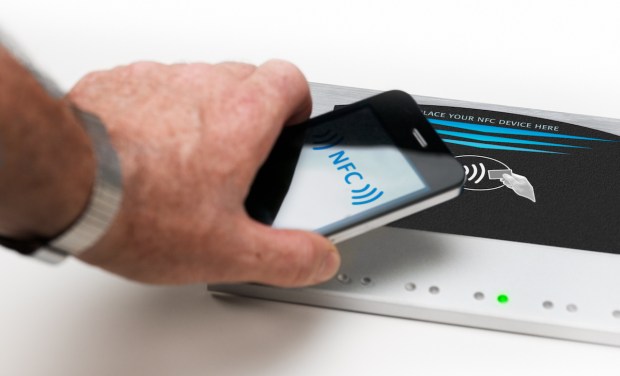NFC Poised to Become Big Tech, Open Banking Battleground

Consumer choice is at the heart of open banking, and, according to the Consumer Financial Protection Bureau (CFPB), open ecosystems and interoperability are among the key enablers of consumer choice.
Near-field chip technology is becoming a flashpoint in the jousting between Big Tech, regulators and competition for consumers’ mind share and “wallet share” as tap-to-pay transactions continue to win adherents.
The CFPB’s September report on Big Tech and contactless payments spotlighted Apple’s NFC chip policies — and, specifically, who gets to access the NFC technology, which underpins tap-and-go functionalities on iOS devices.
Apple’s practices have been in the crosshairs of European regulators, and critics have said that the tech giant has limited NFC access in a bid that is tantamount to hobbling the competitive playing field.
The Desire for Innovation
John (JP) Park, senior product manager of go to market strategy at Bank of America Merchant Services, told PYMNTS in August that contactless payments are proving popular because those payments are convenient, and the speed of checkout, along with enhanced security, are appealing.
But NFC may well prove to be a flashpoint in payments, where Apple might have to mull changes to its tap-to-pay policies or have those changes thrust open the company by regulators.
“Given the large share of Apple devices in the U.S. market, both existing NFC app providers and potential new entrants to the tap-to-pay sphere, such as banks, retailers and established payment app providers (e.g., PayPal, Venmo and Cash App) have a strong incentive to develop tap-to-pay apps for Apple devices. But Apple’s NFC restriction policy prevents them from doing so, and ultimately eliminates the possibility of consumer choice in tap-to-pay on Apple devices,” wrote the CFPB.
As for leveling the playing field itself, the CFPB wrote in its report that broadened access “could incentivize all of the providers to innovate, to develop new features and services that would keep their customers from switching.”
NFC access, the CFPB argued, is critical for innovation, and roadblocks to that access would “impede the shift towards open banking and … negatively impact consumers.”
In an example of how various ecosystems are adding contactless payments into the mix, PayPal Head of Product for Microbusiness Ed Hallett told PYMNTS in June that “tap to pay is going to change the payments industry.”
“It’s the next disruptive innovation,” he added.
“Looking back 15 years ago, there was an equivalent innovation cycle within card payments around mobile [point of sale (POS)],” he explained. “… You had a real push to unlock large portions of the [small- to medium-sized business (SMB)] space who previously didn’t take card payments. They were now able to provide that capability.”
At the time of that interview, PayPal debuted a new Tap to Pay solution on Android for Venmo business profile customers in the United States, as well as all U.S. PayPal Zettle customers. The PayPal announcement followed on the heels of an April announcement that Square would begin offering Tap to Pay on Android for sellers in the U.S., the United Kingdom, Australia, Ireland, France and Spain.

